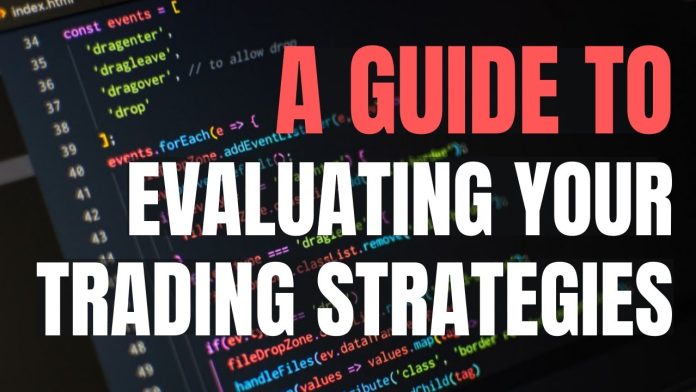Many active traders rely on strategies, also known as systems, to achieve success in stock trading. A good trading strategy can provide trading opportunities across market conditions. The challenge is determining if a strategy is better than another one and whether it would perform in the long run. They need to check the risk involved, the raw performance of a strategy, and if the result will be consistent. To get answers, continue reading the post describing the key measures and show how a trading strategy can be better than others.
Parameters to Evaluate a Trading Strategy
Traders in the quest to evaluate and get a sustainable trading strategy may look at various key measures. These are some parameters in a standard backtesting report. These are the common parameters and many traders looking for basic knowledge, like what is a trading account or ways to find the best one, may find them easy to understand.
-
Maximum Drawdown
Drawdown refers to how much stocks dropped from the highest value. In other words, it is the maximum loss through the strategy. It is usually expressed in %. The lower the max drawdown, the better the strategy will be. However, the maximum risk is not limited to this indicator only.
Maximum Drawdown %: ([Peak Capital – Lowest Capital)/Peak Capital] multiplied by 100.
-
Average Risk Reward Ratio
The risk-reward ratio indicates the success rate of the strategy. It determines the ratio of average loss and profit in the backtesting report. The lower the risk-reward ratio, the better the strategy is.
Average Risk and Reward Ratio: Average Loss/Average Profit
Suppose the strategy faced an average loss of Rs. 500 in a given period. The average profit during this period is Rs.1000. The risk-reward ratio is 1:2. The ratio of 1:2 means even if 67% of trades result in a loss, the net portfolio shows a green. If the risk-reward ratio can be decreased further, the breakeven success rate will also be declined.
-
Trades Duration
Consider the opening and closing time of trades to gauge the aptness of the stop-loss limit. Find the longest trades and know the level up to which the market reacts against this position. Comparing it with profitable trades gives an idea of the stop-loss and target ratio. Traders can look for a broker offering an advanced trading platform against low trading demat account charges.
-
Rate of Return
Estimating how much profit a strategy made during the backtest is necessary. However, it is inaccurate to compare the money made at the end of the backtest with the money invested initially. Suppose a strategy made 10% per month and another one made 150% annually. Choosing the one with the high number is not ideal for traders.
A strategy’s return rate can be assessed in two ways – Money Profit and Tick Profit. It is assumed that a monetary profit means a profit in ticks too. But it is not true. When the tick profit is 0, it is a good strategy with a reasonable increase and stable monthly profit. When it is raised from 0, months of profit can turn into months of losses as the long cycles take place.
-
Maximum Losing Streak
A maximum losing streak traders the maximum number of losses that can happen in a row. It is not an indicator of the overall performance of the strategy but a critical psychological factor to know if a strategy is useful for traders. Traders prefer a strategy where the maximum losing streak is above 5.
-
Sharpe Ratio
The Sharpe ratio is considered the best way for a trading strategy evaluation. Volatility causes risk in stock trading, but null volatility means a constant market, and there will be no opportunities in the market to make profits. On the other hand, high volatility means too much instability in the market that most traders avoid. Traders want maximum returns and the lowest volatility. That is what the Sharpe Ratio figures out.
Sharpe Ratio: (System Return %– Risk-Free Return Rate %)/Standard Deviation %
It estimates the average returns adjusting for the risks. It essentially provides information to check if the strategy is faring against a risk-free return rate and how. Secondly, it tells how volatile the strategy is. Traders avoid a strategy with a Sharpe ratio below 2.
Thus, looking at these figures, traders can find if that strategy deserves their attention. Before utilizing a trading strategy, check it with these aspects.
Read more: Insider trading, nanocaps and happy hours: smallcase managers try offbeat ideas

